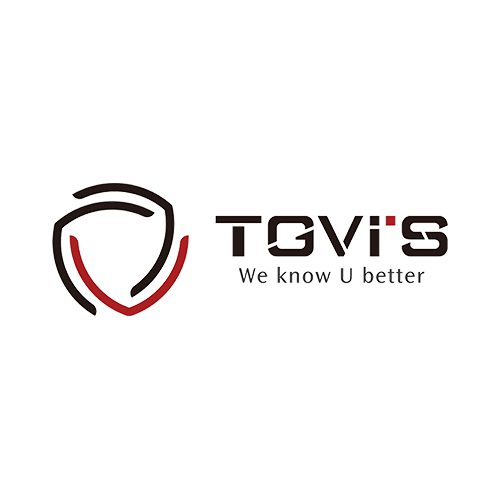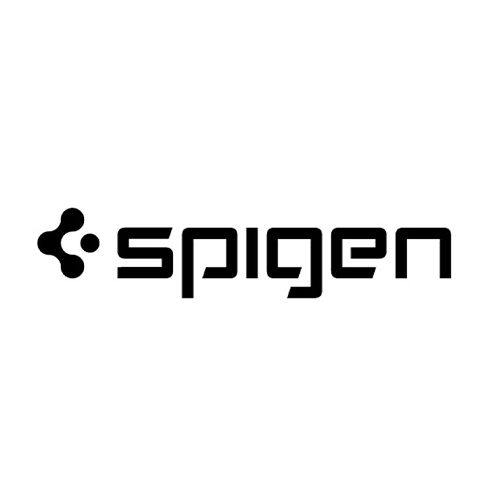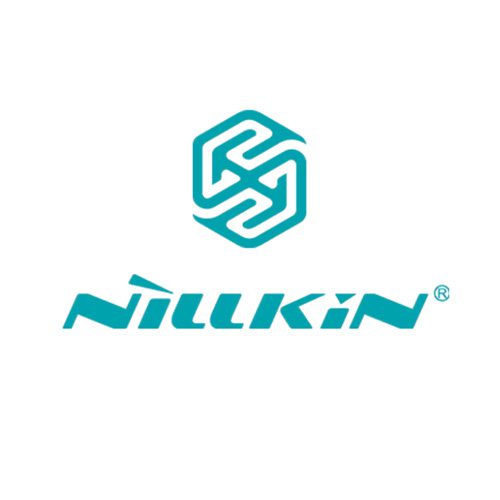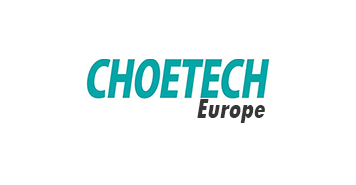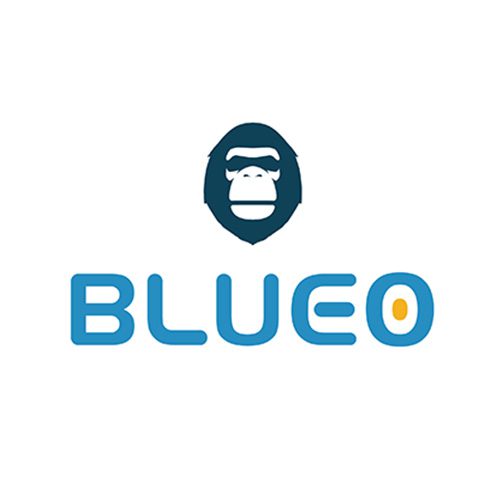Generative AI for customer support
Economic potential of generative AI
It will show all relevant articles under different categories for the same keyword. With such a feature, your business can ensure that agents encounter fewer customer support tickets and an improved self-service experience. In this article, we’ll go into significant depth explaining how Generative AI for customer support is propelling businesses into new frontiers. You’ll find out how generative AI can be incorporated into existing support departments to benefit both customers and agents, and you’ll see successful cases of companies that have implemented Gen AI solutions.
This has helped many support teams reduce the resolution rate and find more time to resolve more complex queries in real time. This solution is trained using AI to answer more accurately during a conversation. What’s more, it finds relevant help article links and shares them with customers to find more relevant answers in no time. If you want to use generative AI for customer support and accurately answer questions with zero training required, you need to meet Fin, our AI-powered bot. It never generates misleading answers or initiates off-topic conversations, and is able to triage complex problems and seamlessly pass them to your human support teams.
But, as your employees get more comfortable with its functionality, it’s easier to share confidential data and not vet AI-generated output. As your business scales internationally, an increasing number of your customer tickets will come in outside normal working hours. Most businesses try to surmount this by hiring a distributed team of customer support managers so that there’s always a live support agent(s) to respond to tickets, but the costs can be prohibitive as you scale. Unlike traditional chatbots that need every detail specified with “if/then” logic, generative AI chatbots and digital assistants can handle basic queries by interpreting them and referencing the data requested against the database it’s trained on.
- Indeed, this list of generative AI use cases for customer service originally included 20 examples.
- In this article, we’ll go into significant depth explaining how Generative AI for customer support is propelling businesses into new frontiers.
- Sometimes customers need fast support during purchase, and if they can’t get it, you run the risk of them abandoning their order.
- We will also see benefits in field service with generative AI for both frontline service teams and customers.
The Conversation Booster by Nuance uses generative AI to combat this issue as users carry out self-service tasks within the bot. These may include making payments, scheduling appointments, or updating their personal information. Alongside the answer, the GenAI-powered bot cites the sources of information it leveraged, which the customer can access if they wish to dig deeper.
Simplifying Self-Service and Bot-Building Activities
Combined with Salesforce’s long standing expertise in AI, generative AI models will change the game for customer service, helping companies operate more efficiently, develop more empathetic responses to customer requests, and resolve cases faster. In fact, ChatGPT is so good that UK energy supplier Octopus Energy has built conversational AI into its customer service channels and says that it is now responsible for handling inquiries. The bot reportedly Chat GPT does the work of 250 people and receives higher customer satisfaction ratings than human customer service agents. This is a prime example of how contact centers will increasingly incorporate generative AI chat and voice tools to deal with straightforward, easily repeatable tasks. And, of course, these tools give customers 24/7 access to support, 365 days a year, via multiple channels (such as phone, online chat, and social media messaging).
From personalized customer experiences to efficient supply chain management, generative AI is… Depending on the prompt you provide, generative AI models draw on their training data to offer their best estimate of what you want to hear. Gen AI accelerates analytical and creative tasks around training and maintaining AI-powered bots. This helps automation managers, conversation designers, and bot creators work more efficiently, enabling organizations to get more value from automation faster.
We’ll be adding real-time live translation soon, so an agent and a customer can talk or chat in two different languages, through simultaneous, seamless AI-powered translation. We’ll also be offering personalized continuous monitoring and coaching for ALL agents with real time score cards and personalized coaching and training in real time and post-call. Deploy Einstein Bots to every part of your business, from marketing to sales to HR. Qualify and convert leads, streamline employee processes, and build great conversational experiences with custom bots. The deployment of generative AI and other technologies could help accelerate productivity growth, partially compensating for declining employment growth and enabling overall economic growth. In some cases, workers will stay in the same occupations, but their mix of activities will shift; in others, workers will need to shift occupations.
Well, many tangible use cases were already in the space before the advent of the tech. Global businesses are pumping funds into generative AI (GenAI) use cases for customer service. When applied across industries, generative AI’s focus and capabilities facilitate outcomes that seemed futuristic until recently. Businesses globally have seen significant impacts—the ability to send proactive alerts, more upsell and cross-sell opportunities, and an unprecedented level of personalization—of generative AI across the customer experience arena.
To streamline processes, generative AI could automate key functions such as customer service, marketing and sales, and inventory and supply chain management. Technology has played an essential role in the retail and CPG industries for decades. Traditional AI and advanced analytics solutions have helped companies manage vast pools of data across large numbers of SKUs, expansive supply chain and warehousing networks, and complex product categories such as consumables. In addition, the industries are heavily customer facing, which offers opportunities for generative AI to complement previously existing artificial intelligence.
In particular, our estimates of the primary value the technology could unlock do not include use cases for which the sole benefit would be its ability to use natural language. For example, natural-language capabilities would be the key driver of value in a customer service use case but not in a use case optimizing a logistics network, where value primarily arises from quantitative analysis. Generative AI can substantially increase labor productivity across the economy, but that will require investments to support workers as they shift work activities or change jobs. Generative AI could enable labor productivity growth of 0.1 to 0.6 percent annually through 2040, depending on the rate of technology adoption and redeployment of worker time into other activities. Combining generative AI with all other technologies, work automation could add 0.5 to 3.4 percentage points annually to productivity growth.
Infobip’s head of product Krešo Žmak was interviewed for Medium to provide his take on the future of artificial intelligence. Since these algorithms are trained on mass amounts of data, it is critical to ensure none of the data contains sensitive information. You then run a risk of the AI revealing this information in responses or making it easier for hackers to gain access to private data. Account creation or profile registration can be done with an AI chatbot over any messaging channel of your choice.
For example, if a number of users are having difficulty accessing a service, then other users who are likely to want to use the service could be warned beforehand, enabling them to make alternative arrangements. Ultimately, this will reduce the chance of losing customers due to poor support experiences. In an era in which efficiency is more critical than ever, tools powered by generative AI for customer support allow you to offer 24/7 assistance without burning out your team. This inexhaustible technology means that your customers get accurate, personalized answers at any time, day or night.
Upload and categorize the customer support data you’ll teach your AI model
Since 2018, we’ve been a pioneer in this space, and our integration of generative AI across the CX Cloud platform is revolutionizing the way we automate contact center operations. Our customers are already reaping the benefits, seeing unprecedented improvements in customer experience, along with significant cost reductions and boosts in operational efficiency. The potential for generative AI like ChatGPT to disrupt how humans interact with computers, change how information is retrieved, and transform jobs across industries has left a lot of company leaders scratching their heads.
You can also interact with the AI agent to set the tone for all the conversations with the customers. Moreover, this solution easily integrates with multiple communication channels, therefore helping you create an omnichannel solution for the business. With their ability to replicate human-like responses, Gen AI tools are the next big thing for companies looking to improve the customer experience.
Instead of manually creating this training data for intent-based models, you can ask your Gen AI solution to generate it. Support agents can prompt a Gen AI solution to convert factual responses to customer queries in a specific tone. They remember the context of previous messages and regenerate responses based on new input. Generative AI is a branch of artificial intelligence that can process vast amounts of data to create an entirely new output. Depending on the training data you use (and what you want the AI model to do), this output can be text, images, videos, and even audio content. One option for organizations looking to explore generative AI solutions is to use internal data scientists and analysts.
With an AI chatbot, you can guide customers through the return process, offer updates, and ensure they are satisfied with your services overall. By using location services and training your AI chatbot accordingly, you can offer customers support on finding local stores, bank branches, pharmacies, etc. Your chatbot can summarize a list of local locations, working hours, time to travel, and other important information all in one conversation. Generative AI (GenAI) is a type of artificial intelligence that can create new and unique content like text, videos, images, audio, etc., resembling human created content. The AI models learn patterns and structures from input data to create a totally new piece of content with similar characteristics. Flow Modelling by Cresta offers such a solution, determining this path based on its impact on various customer experience and business outcomes.
In that frenzy, contact center vendors pumped out many GenAI-fuelled features to seize the initial media attention and convince customers that it’s finally time to embrace AI. Upfront, the vendor installed a GenAI-infused search engine so service teams can see how they stack up against the competition by simply entering a few written prompts. At its heart, the solution contains a wealth of anonymized contact center conversation data that NICE has pulled together and used to develop sector-specific benchmarks for many metrics. When an agent types in a question, it can pop up the answer, so the agent doesn’t have to trawl through articles and documents to find it. If a contact center can continuously feed such a solution with knowledge sources, contact centers can continually monitor customer complaints and act fast to foil emerging issues.
It harnessed the LLM in such a way that if a virtual agent receives a question it hasn’t had training to handle, generative AI provides a fallback response. Now part of Microsoft, Nuance was one of the first vendors to add ChatGPT to its conversational AI platform. Another advantage of these auto-generated articles is that they’re in the same format, allowing agents to quickly comprehend and action them. When this happens, it may flag the knowledge base gap to the contact center management, which can then assess the contact reason and create a new knowledge article. Yet, sometimes, there is no knowledge article for the solution to leverage as the basis of its response.
While it does not have access to any deployment health information or your data, the Support Assistant is deeply knowledgeable about Elastic across a wide span of use cases. Over 200 of our own Elasticians use it daily, and we’re excited to expand use to Elastic customers as well. For example, a healthcare enterprise may use sentiment analysis to detect a frustrated customer and escalate the issue to a human agent for personalized attention. Implementing generative AI for customer support can help your team achieve scalability. It allows you to offer 24/7 assistance to your customers, as well as more consistent responses, no matter how high the volume of inquiries becomes. But hiring and training more support agents may not always be the most practical or cost-effective response.
A service team may then have a supervisor or experienced agent assess the knowledge article, edit it, and publish it in the knowledge base to keep a human in the loop. Already, 12 of the top 20 customer service BPOs have leveraged the solution, reportedly cutting agent attrition by up to 50 percent. Background noise cancellation specialists – such as Sanas and Krisp – generate much of their business in customer service and have long sought ways to bolster their tech stack to increase their presence in contact centers. After years of call and contact monitoring and CSAT/sentiment analysis, experienced team leaders and quality analysts understand what an excellent customer conversation looks like. Its “expanding agent replies” solution allows agents to type the bare bones of their response and then fleshes it out for them, saving them time in responding to customers across digital channels.
As a result, a broader set of stakeholders are grappling with generative AI’s impact on business and society but without much context to help them make sense of it. Internal to Elastic, the Field Technology team builds tools for Elastic employees. We use our own technologies heavily and are often customer zero for our Search and Observability solutions. Overall, I believe that the secret to success is to learn to treat AI as both a tool and as a partner.
Our analysis suggests that implementing generative AI could increase sales productivity by approximately 3 to 5 percent of current global sales expenditures. We estimate that applying generative AI to customer care functions could increase productivity at a value ranging from 30 to 45 percent of current function costs. We then estimated the potential annual value of these generative AI use cases if they were adopted across the entire economy. For use cases aimed at increasing revenue, such as some of those in sales and marketing, we estimated the economy-wide value generative AI could deliver by increasing the productivity of sales and marketing expenditures. But a full realization of the technology’s benefits will take time, and leaders in business and society still have considerable challenges to address. These include managing the risks inherent in generative AI, determining what new skills and capabilities the workforce will need, and rethinking core business processes such as retraining and developing new skills.
Last year, we launched the Contact Center AI Platform, an end-to-end cloud-native Contact Center as a Service solution. CCAI Platform is secure, scalable, and built on a foundation of the latest AI technologies, user-first design, and a focus on time to value. With generative AI, you can empower human agents with in-the-moment assistance to be more productive and provide better service. Whether placing an order, requesting a product exchange or asking about a billing concern, today’s customer demands an exceptional experience that includes quick, thorough answers to their inquiries.
- Our second lens complements the first by analyzing generative AI’s potential impact on the work activities required in some 850 occupations.
- Integrate data, including Knowledge, from third-party systems to help Agentforce Service Agent generate accurate responses personalized to your customers’ specific needs and preferences.
- While this approach may be the fastest to deploy a solution, it is also the costliest to maintain.
- Customers are looking for fast, human-like responses from chatbots, and generative AI can help brands elevate their customer support, if trained and integrated in the right way.
- With generative AI, you can widen the breadth of use cases and FAQ questions that the chatbot can handle, making customer support faster and more convenient than before.
For lower-wage occupations, making a case for work automation is more difficult because the potential benefits of automation compete against a lower cost of human labor. Additionally, some of the tasks performed in lower-wage occupations are technically difficult to automate—for example, manipulating fabric or picking delicate fruits. Some labor economists have observed a “hollowing out of the middle,” and our previous models have suggested that work automation would likely have the biggest midterm impact on lower-middle-income quintiles. Generative AI’s ability to understand and use natural language for a variety of activities and tasks largely explains why automation potential has risen so steeply. Some 40 percent of the activities that workers perform in the economy require at least a median level of human understanding of natural language. Generative AI tools can draw on existing documents and data sets to substantially streamline content generation.
As a result, it dramatically reduces your support volume, simultaneously improving both customer and agent satisfaction. A few leading institutions have reached level four on a five-level scale describing the maturity of a company’s AI-driven customer service. But done well, an AI-enabled customer service transformation can unlock significant value for the business—creating a virtuous circle of better service, higher satisfaction, and increasing customer engagement.
Benioff suggested that the pricing model for Agentforce’s agents could be based on consumption, such as by charging companies based on the number of conversations. We hope this research has contributed to a better understanding of generative AI’s capacity to add value to company operations and fuel economic growth and prosperity as well as its potential to dramatically transform how we work and our purpose in society. Companies, policy makers, consumers, and citizens can work together to ensure that generative AI delivers on its promise to create significant value while limiting its potential to upset lives and livelihoods. The time to act is now.11The research, analysis, and writing in this report was entirely done by humans. Previous generations of automation technology often had the most impact on occupations with wages falling in the middle of the income distribution.
With the acceleration in technical automation potential that generative AI enables, our scenarios for automation adoption have correspondingly accelerated. These scenarios encompass a wide range of outcomes, given that the pace at which solutions will https://chat.openai.com/ be developed and adopted will vary based on decisions that will be made on investments, deployment, and regulation, among other factors. But they give an indication of the degree to which the activities that workers do each day may shift (Exhibit 8).
Consulting with experts in both fields and partnering with AI vendors specializing in customer service and support can help ensure successful implementation. They can also handle a large volume of queries efficiently and provide more personalized responses over time. After training, you’ll need to validate your generative AI assistant in a controlled environment, possibly by opening it up to your internal support agents or a smaller segment of customers.
Its ability to rapidly digest mountains of data and draw conclusions from it enables the technology to offer insights and options that can dramatically enhance knowledge work. This can significantly speed up the process of developing a product and allow employees to devote more time to higher-impact tasks. Some of this impact will overlap with cost reductions in the use case analysis described above, which we assume are the result of improved labor productivity. Generative AI’s impact on productivity could add trillions of dollars in value to the global economy. Our latest research estimates that generative AI could add the equivalent of $2.6 trillion to $4.4 trillion annually across the 63 use cases we analyzed—by comparison, the United Kingdom’s entire GDP in 2021 was $3.1 trillion.
Generative AI revolutionizes customer service and support experiences by providing personalized, efficient, and impactful support, which will, in turn, help strengthen and expand the relationship between businesses and their customers. With the arrival of generative AI, though, we can see a new and powerful path to contact center modernization that is powered by AI and based in the cloud. According to a global generative ai for customer support survey conducted in May 2024, 38 percent of respondents who worked in marketing, PR, sales, or customer service roles reported that increased efficiency was the leading benefit of using generative AI for social media marketing. Respondents also stated that increased content production, enhanced creativity, and reduced costs were some of the top resons for using generative AI for social media marketing.
A few years back, the world was bursting with promises about AI transforming contact centers, yet the reality was a long way from meeting the hype. Solutions required significant resources and expensive data scientists to train and update and oftentimes didn’t work as well as promised. That’s when we started to work on redefining AI in the contact center space—creating an AI-powered contact center platform that wasn’t just buzz, but a tangible game-changer.
For value creation to happen, we have to think about large language models as a solution to an unmet need, which requires a precise understanding about the pain points in customer experiences. From finance to healthcare and from education to travel, industry observers expect an explosion of service innovations and new digital user experiences on the horizon. IBM Consulting™ can help you harness the power of generative AI for customer service with a suite of AI solutions from IBM. For example, businesses can automate customer service answers with watsonx Assistant, a conversational AI platform designed to help companies overcome the friction of traditional support in order to deliver exceptional customer service. Combined with watsonx Orchestrate™, which automates and streamlines workflows, watsonx Assistant helps manage and solve customer questions while integrating call center tech to create seamless help experiences. Make work faster for agents, supervisors and customers with Einstein Copilot, your AI assistant for CRM.
Elastic does not have any control over the third party tools and we have no responsibility or liability for their content, operation or use, nor for any loss or damage that may arise from your use of such tools. Please exercise caution when using AI tools with personal, sensitive or confidential information. There is no guarantee that information you provide will be kept secure or confidential. You should familiarize yourself with the privacy practices and terms of use of any generative AI tools prior to use. Security and complianceThe Assistant can offer guidance on securing your Elastic deployment, from setting up role-based access control (RBAC) to configuring encryption and audit logging. For customers in regulated industries, it can also provide information on how Elastic’s security features align with compliance requirements like GDPR or HIPAA.
Ensure your customers can get round the clock, relevant, and fast support when they need it without waiting for an agent or searching your website for answers. Appointment booking and management is one of the more popular ways businesses use chatbots for support. Customers can choose their appointment times, cancel, and reschedule as needed without having to wait for an agent. The tool offers these employees real-time AI-powered recommendations from troubleshooting source material – including product manuals – to support them in solving issues remotely.
No matter your entry point, you can benefit from the latest innovations across the Vertex AI portfolio. Check out our Next ’23 sessions for Vertex AI Conversation and Contact Center AI to catch more details about all the innovation we’re bringing to you or talk to your Google Cloud sales team to learn more about how you can get value from generative AI today. Also, visit our website to stay updated on the latest conversational AI technologies from Google Cloud. The latest developments in generative AI are pointing to a future where implementation timelines are shrinking for technology adoption, and my team and I are focused on helping customers realize Day 1 value. Get the latest research, industry insights, and product news delivered straight to your inbox. Deflect cases, cut costs, and boost efficiency by empowering your customers to find answers first.
Neurond Generative AI consulting services support drafting an AI implementation roadmap for your business needs. Based on experiences identifying the potential of scaling your businesses, we analyze the low-hanging fruit use cases to maximize implementation efficiency. Generative AI implementation has been a strategic approach to streamlining the operation system, with the market size worldwide intending to gain $45 billion in 2023, according to Statista. Regarding objectives when adopting GenAI, McKinsey reports reveal that a high percentage of high-performer businesses want to increase revenue from core services (27%), create new revenue sources (23%), and increase the value of existing offerings (30%). As an example of how this might play out in a specific occupation, consider postsecondary English language and literature teachers, whose detailed work activities include preparing tests and evaluating student work.
Improve agent productivity and elevate customer experiences by integrating AI directly into the flow of work. Our AI solutions, protected by the Einstein Trust Layer, offer conversational, predictive, and generative capabilities to provide relevant answers and create seamless interactions. With Einstein Copilot — your AI assistant for CRM, you can empower service agents to deliver personalized service and reach resolutions faster than ever. Einstein 1 Service Cloud has everything you need to scale now and drive immediate value. Some of the key benefits of AI for customer service and support are service team productivity, improved response times, cost reduction through automation, personalized customer experiences, and more accurate insights and analysis.
Data for Generative AI: Considerations and Challenging Issues
However, working with startups comes with inherent risks, such as uncertain long-term viability and the need for additional resources. OpenAI’s GPT model doesn’t regurgitate information word-for-word; it aims to find patterns in the data it’s trained on, ‘digests’ it, and reconstructs them when prompted. As of July 2023, ChatGPT hasn’t even been out eight months in the wild, and it’s already getting banned left and right—companies like Apple, Samsung, Verizon, Accenture, and a slew of banks such as J.P.
Pretrained foundation models that underpin generative AI, or models that have been enhanced with fine-tuning, have much broader areas of application than models optimized for a single task. They can therefore accelerate time to market and broaden the types of products to which generative design can be applied. For now, however, foundation models lack the capabilities to help design products across all industries. For example, the life sciences and chemical industries have begun using generative AI foundation models in their R&D for what is known as generative design. Foundation models can generate candidate molecules, accelerating the process of developing new drugs and materials.
Inside Peek at Salesforce’s Intelligent Agent Strategy – CMSWire
Inside Peek at Salesforce’s Intelligent Agent Strategy.
Posted: Thu, 05 Sep 2024 10:02:02 GMT [source]
You can foun additiona information about ai customer service and artificial intelligence and NLP. Engaged customers are more loyal, have more touchpoints with their chosen brands, and deliver greater value over their lifetime. Since AI can only manage queries it has been specifically trained for, it’s critical for there to still be a human-in-the-loop. An AI chatbot, for example, can easily transfer a customer to an agent when it knows it can no longer help. The challenge is finding the balance of when the right moment is for this transfer to ensure accuracy and maintain customer satisfaction. Ensuring your refund and return process is smooth is critical to customers repurchasing with you in the future, even if they didn’t keep the product the first time.
Botsify is another customer service AI tool that helps you build a seamless customer conversation experience. Once integrated with various communication channels, you can cater to customer queries 24/7 and ensure they don’t leave without an answer or an action. This tool has successfully helped businesses reduce customer wait time by sending prompt responses in seconds. The solution is also proactive at reaching out to prospects in case they are at the decision-making stage and helping businesses boost their sales. Zia, their contextual AI, helps support teams answer tickets faster, reducing resolution time.
Adoption is also likely to be faster in developed countries, where wages are higher and thus the economic feasibility of adopting automation occurs earlier. Even if the potential for technology to automate a particular work activity is high, the costs required to do so have to be compared with the cost of human wages. In countries such as China, India, and Mexico, where wage rates are lower, automation adoption is modeled to arrive more slowly than in higher-wage countries (Exhibit 9).
AI for customer service and support refers to the use of artificial intelligence technologies, such as natural networks and large language models, to automate and enhance customer engagements. AI augments customer service and support while improving service team productivity, providing relevant responses, and personalizing support experiences. A generative AI bot trained on proprietary knowledge such as policies, research, and customer interaction could provide always-on, deep technical support. Today, frontline spending is dedicated mostly to validating offers and interacting with clients, but giving frontline workers access to data as well could improve the customer experience.
In the first two examples, it serves as a virtual expert, while in the following two, it lends a hand as a virtual collaborator. You are overwhelmed but clear the backlog somehow, only to find more incoming service requests waiting for you. In this blog post, we may have used or referred to third party generative AI tools, which are owned and operated by their respective owners.
AI-generated guides will help new employees and contractors to onboard quickly and brush up on their skills with ongoing learning resources. Customers will be able to troubleshoot common issues on their own with knowledge base articles. Reetu Kainulainen is the CEO and Co-Founder of
Ultimate, the world’s leading virtual agent platform custom-built for support. Started in 2016, with a global client base far exceeding its Berlin and Helsinki-based roots, the company is transforming how customer service works for brands and customers alike. Reetu is passionate about using AI to scale customer service and – as importantly – to make agents’ careers more rewarding. Successfully deploying AI-based solutions in customer service and support requires expertise in data sciences and customer service domain knowledge.
Pedro Andrade is vice president of AI at Talkdesk, where he oversees a suite of AI-driven products aimed at optimizing contact center operations and enhancing customer experience. Pedro is passionate about the influence of AI and digital technologies in the market and particularly keen on exploring the potential of generative AI as a source of innovative solutions to disrupt the contact center industry. We will also see benefits in field service with generative AI for both frontline service teams and customers.
Institutions are finding that making the most of AI tools to transform customer service is not simply a case of deploying the latest technology. Customer service leaders face challenges ranging from selecting the most important use cases for AI to integrating technology with legacy systems and finding the right talent and organizational governance structures. Transform customer experience with generative AI by providing targeted offers, personalized content, and identifying emerging trends.
With so many architecture and software options available, finding the right approach can be difficult. If you’re interested in building a chatbot, our related blog, chatbot-tutorial, provides a step-by-step guide to help you get started. As documented in this blog series, we found that a RAG architecture powered by Elasticsearch delivered the best results for our users and provided a platform for future generative AI solutions.
They don’t drain your resources and are a perfect solution in a controlled environment. Business leaders resisted implementing automation solutions in the past because customers found bot-to-human interactions frustrating. However, implementing Gen AI in customer service comes with its own set of challenges.
That’s why it’s such an attractive first step for gen AI and contact center transformation. Salesforce is a company that makes cloud-based software designed to help businesses find more prospects, close more deals, and wow customers with amazing service. Zendesk is planning on charging for its AI agents based on their performance, aligning costs with results, the company announced Wednesday. Agentforce Service Agent chats with customers using natural language and sophisticated reasoning across self-service portals and messaging channels like WhatsApp, Apple Messages for Business, Facebook Messenger, and SMS. Customers can even send photos, videos, and audio if their issue is too hard to explain in text.
Using the Dialogflow Messaging Client, you can then easily integrate the agent into your website, business or messaging apps, and contact center stack. This provides a quick and easy way to divert a large number of support calls to self-service, with relatively low investment and high customer satisfaction. No matter where you are in your journey of customer service transformation, IBM Consulting is uniquely positioned to help you harness generative AI’s potential in an open and targeted way built for business.
That’s because it trains on company information and integrates seamlessly with the whole tool stack. This approach makes it smarter every time during an interaction and improves customer experience. It’s true that chatbots and similar technology can deliver proactive customer outreach, reducing human-assisted volumes and costs while simplifying the client experience. Nevertheless, an estimated 75 percent of customers use multiple channels in their ongoing experience.2“The state of customer care in 2022,” McKinsey, July 8, 2022.

























